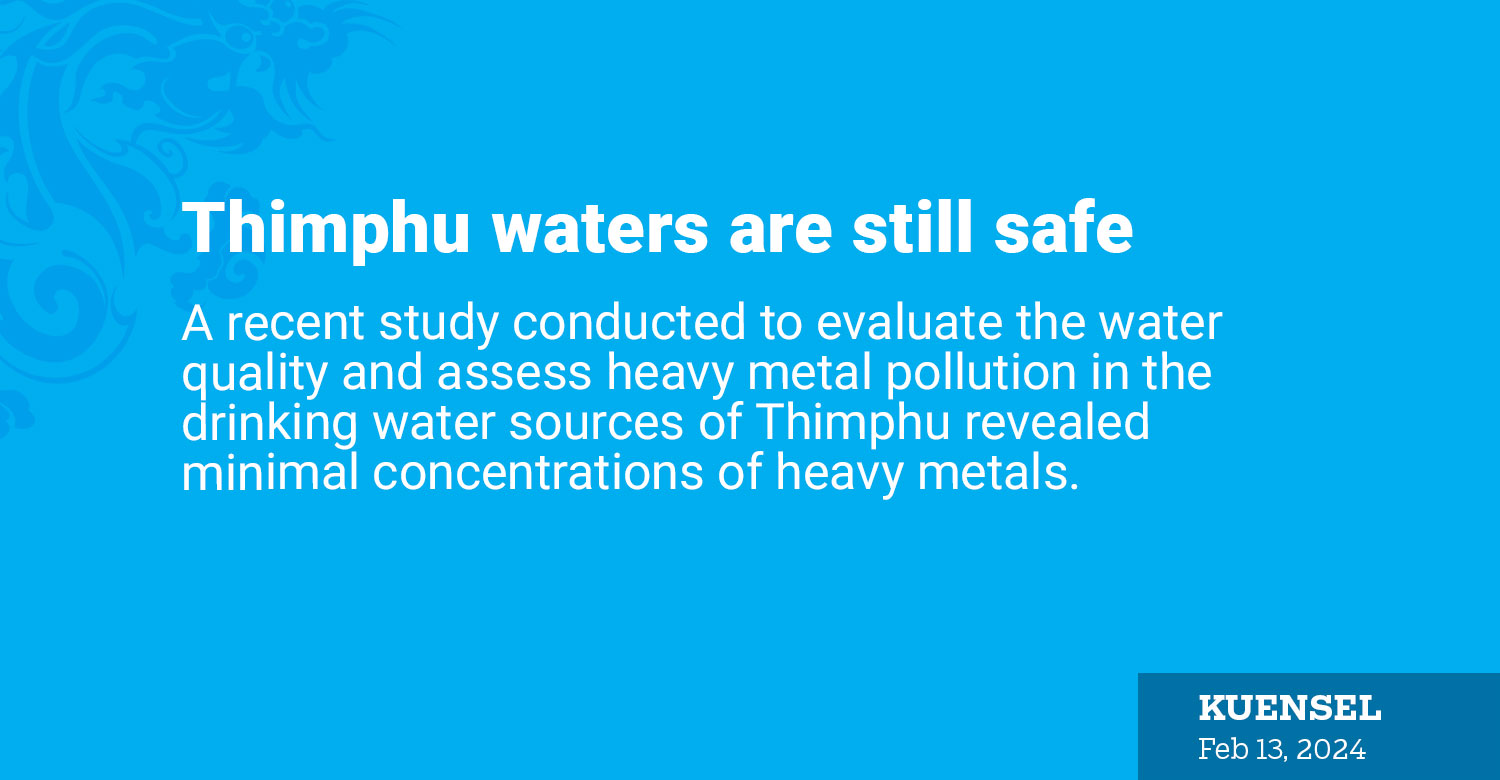Jigmi Wangdi
A recent study conducted to evaluate the water quality and assess heavy metal pollution in the drinking water sources of Thimphu revealed minimal concentrations of heavy metals.
What does it mean?
These metals, known for their toxicity and associated health risks, are a focal point of water quality evaluations.
The study investigated heavy metal levels in five primary drinking water sources in Thimphu: Motithang, Jungshina, Taba, Dechencholing, and Chamgang.
The study identified ten heavy metals (Aluminum (Al), Boron (B), Barium (Ba), Cadmium (Cd), Chromium (Cr), Copper (Cu), Manganese (Mn), Nickel (Ni), Lead (Pb), and Zinc (Zn)) known for their toxic properties.
The study underscored the threat posed by heavy metal contamination in water sources due to their potential adverse health effects.
Exposure to these metals can result in various health issues such as cancer, hypertension, lung disease, gastrointestinal bleeding, renal disease, and reproductive effects.
Thimphu, housing the largest population in Bhutan, with approximately 138,736 residents, comprising 19.1 percent of the nation’s total population, is projected to accommodate nearly 30 percent of Bhutan’s entire population by 2047.
With increasing developmental activities, the city’s water sources face ongoing contamination risks, posing a significant public health concern.
The study emphasised the necessity for continuous monitoring and comprehensive assessments of heavy metals in Thimphu’s drinking water sources, primarily consisting of streams and rivers, to ensure water quality and sustainable resource management.
It also referenced similar studies conducted in Nepal, Bangladesh, and Pakistan, which exceeded the maximum permissible limit (MPL) for heavy metal contamination.
Factors contributing to this contamination include poor waste management, open sludge discharge, inadequate municipality measures, electronic waste, pesticide application, and mining activities.
Upon analyzing the concentrations of the ten heavy metals in Thimphu’s drinking water sources, the study found all levels to be below the MPL established by the Bhutan Drinking Water Quality Standard and the World Health Organization (WHO).
This indicates compliance with both national and international drinking water quality standards.
The study, led by Chimmi Dorji and Pema Chophel from the Royal Centre for Disease Control, Ministry of Health, was published in November 2023.


